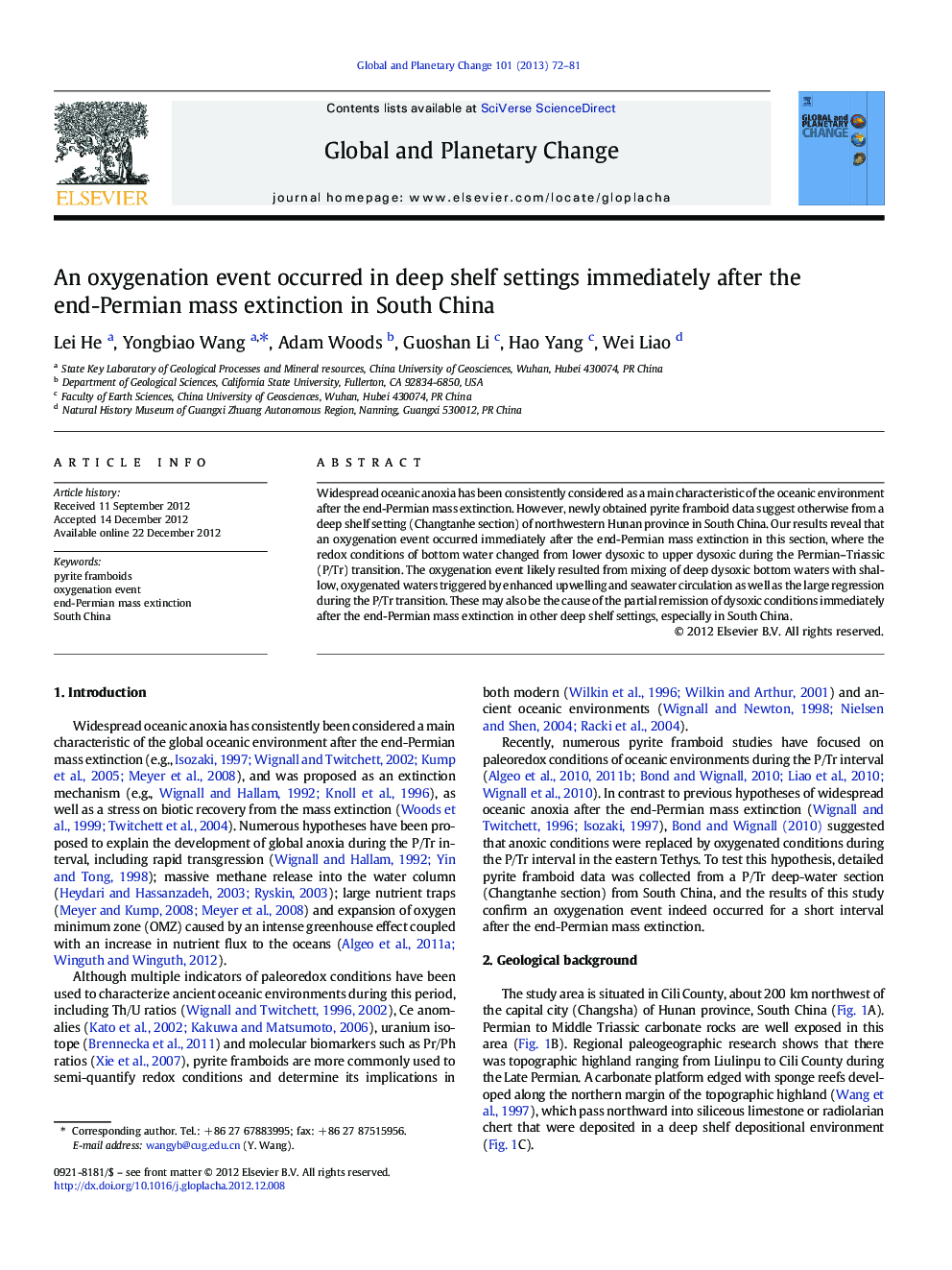| Article ID | Journal | Published Year | Pages | File Type |
|---|---|---|---|---|
| 4463470 | Global and Planetary Change | 2013 | 10 Pages |
Widespread oceanic anoxia has been consistently considered as a main characteristic of the oceanic environment after the end-Permian mass extinction. However, newly obtained pyrite framboid data suggest otherwise from a deep shelf setting (Changtanhe section) of northwestern Hunan province in South China. Our results reveal that an oxygenation event occurred immediately after the end-Permian mass extinction in this section, where the redox conditions of bottom water changed from lower dysoxic to upper dysoxic during the Permian–Triassic (P/Tr) transition. The oxygenation event likely resulted from mixing of deep dysoxic bottom waters with shallow, oxygenated waters triggered by enhanced upwelling and seawater circulation as well as the large regression during the P/Tr transition. These may also be the cause of the partial remission of dysoxic conditions immediately after the end-Permian mass extinction in other deep shelf settings, especially in South China.
► Paleoredox analysis was conducted in a deep shelf setting in South China. ► An “oxygenation event” is recognized during the P/Tr transition for the first time. ► The oxygenation event may have resulted from enhanced circulation and large regression.
